FMS Models 1400MM T-28 trojan v4 Owner's manual
- Category
- Remote controlled toys
- Type
- Owner's manual
This manual is also suitable for

1400MM T-28
Trojan V4

2
Safety
Lithium Polymer (Li-Po) Battery Warning
CAUTION: Always follow the manufacturer’s instructions for safe use and disposal of batteries. Fire, property
damage, or serious injury can result from the mishandling of Li-Po batteries.
By handling, charging or using a Li-Po Battery you assume all risks associated with lithium batteries.
If at any time the batteries begin to swell, or balloon, discontinue use immediately!
Always store the batteries at room temperature in a dry area to extend the life of the battery, Always transport
Never use a Ni-Mh charger to charge Li-Po batteries. Failure to charge the battery with a Li-Po compatible charger
may cause fire resulting in personal injury and property damage.
Never discharge Li-Po Cells below 3V.
Never leave charging batteries unattended.
Never charge damaged batteries.
Charging the Flight Battery Warning
Use a battery charger that is designed to safely charge the Li-Po Battery. Read the charger instructions carefully
before use. When charging the battery, make certain the battery is on a heat resistant surface. It is also highly
recommended to place the Li-Po Battery inside a fire resistant charging bag readily available at hobby shops or
online.
or temporarily store the battery in a temperature range of 40-120F. Do not store the battery or model in a car or in
direct sunlight. If stored in a hot car, the battery can be damaged or even catch fire.
Safety Precautions and Warnings
WARNING
WARNING: Read the ENTIRE instruction manual to become familiar with the features of the product before operating.
Failure to operate the product correctly can result in damage to the product, personal property and cause serious
injury.
This is a sophisticated hobby product and NOT a toy. It must be operated with caution and common sense or you may
cause injury or damage to the product or other property.This product is not intended for use by children without direct
adult supervision.
This manual contains instructions for safety operation and maintenance. It is essential to read and follow all the
instructions and warnings in the manual prior to assembly, setup or use, in order to operate and prevent damage or
serious injury.
As the user of this product, you are solely responsible for operating in a manner that does not endanger yourself and
others or result in damage to the product or the property of others. This model is controlled by a radio signal subject
to interference from many sources outside your control. This interference can cause momentary loss of control so it
is advisable to always keep a safe distance in all directions around your model, as this margin will help prevent
collisions or injury.
Age Recommendation: Not for children under 14 years. This is not a toy.
·Never operate your model with low transmitter batteries.
·Always operate your model in an open area away from cars, traffic or people.
·Avoid operating your model in the street where injury or damage can occur.
·Never operate the model in the street or in populated areas for any reason.
·Carefully follow the directions and warnings for this and any optional support equipment (chargers, rechargeable
battery packs, etc. ) you use.
·Keep all chemicals, small parts and anything electrical out of the reach of children.
·Moisture causes damage to electronics. Avoid water exposure to all equipment not specifically designed and
protected for this purpose.
·Never lick or put any part of your model in your mouth as it could cause serious injury or even death.

3
Introduction....................................................................................................................................................3
Contents of Kit...............................................................................................................................................4
Assemble the plane.......................................................................................................................................5
Install the battery............................................................................................................................................6
Get your model ready to fly............................................................................................................................7
The transmitter and model setup...................................................................................................................8
Check the control throws...............................................................................................................................9
Check the motor rotating direction.................................................................................................................9
Control Horn and Servo Arm Settings.............................................................................................................9
Install the propeller and spinner...................................................................................................................10
Check the C.G.(Center of Gravity)................................................................................................................10
Before flying the model ................................................................................................................................11
Flying course.................................................................................................................................................12
Troubleshooting............................................................................................................................................13
Spare parts list of contents..........................................................................................................................14
ESC instruction............................................................................................................................................15
Table of Contents
Overview
The FMS 1400mm T28 is going to get its fourth remarkable upgrade after it was launched three years
ago. The 1400mm T28 V4 is coming!
No matter whether you had an FMS T28 or not before, the coming V4 is full of surprises. First of all, the
foam ratio has been upgraded from EPO 40 to the lighter and larger EPO 52, which alleviates the
airplane's weight, without weakening the airplane. Moreover, the original oil paint which has an
unavoidable negative side effect of corrosion has been replaced by the latest environmental water-based
paint.
Let’s take a look at more upgrades below. The latest FMS multi-connector is also used for V4, which
makes the assembly easy and simple while leaving the wires orderly and user-friendly. The 1400mm T28
V4 adopts the new design of ball linkage to remove the clearance and hit an accurate flight. The updated
4258 motor drives the power and speed around 30% higher. In addition, it could work with 4S, 5S, and 6S
batteries to satisfy different customer requirements. Both front and rear landing gears are metal, with a
shock absorption function for hard landings. In terms of construction and performance, the 1400mm T28
V4 is totally different to the old versions. It is certain that the latest version greatly enhances flight appeal.
Don't miss out on this thrilling experience.
New feature
• New upgraded 4258-KV650 motor and 70A ESC
• New technology lighter EPO foam
• New water painting for environmental protection
• Shock absorbing metal oleo front and main landing gear struts
• No more foam hinges! Nylon hinge material on control surfaces
• Screw-in servo pockets. No more glued in servos! A bad servo can be replaced with 2 screws
• Digital metal gear servos throughout
• Ball links on all control surfaces
• Easy, single wire quick connectors to remove the wings
• Slide out battery tray for easy battery changes
Introduction

4
Before assembly, please inspect the contents of the kit. The photo below details the contents of the kit and
labels. If any parts are missing or defective, please indentify the name or part number (refer to the spare
parts list near the end of the manual) then contact your local shop or email us: [email protected]
Contents of Kit
A.
B.
E.
C.
D.
A: Main wing
B: Main fuselage
C: Propeller
D: Pipe (For Horizontal Stabilizer)
E: Horizontal stabilizer and screws (PA2.6*40mmX2)
F: Rudder and rudder screw (PA3.0*30mmX1 PA3.0*40mmX1)
G: Wing bracket and Screws (HKM3.0*65mmX4)
F.
G.
Wingspan : 1400mm(55.1in)
Length : 1185mm(46.7in)
Weight :2450g(86.4oz)
Wing Area : 33.4dm (517.7in )
Wing Load : 73.3g/dm (0.17oz/in )
Radio Controls : 6 Channel

5
fig5
fig3
fig2
1.
Slide both wing tubes into the wing holes. Both tube are the same length. Ensure the connector wires pass
through the hole to the top side of the wing. Secure the wing together by installing two brackets where the
two wing halves join as shown.
2.
Unpack the elevator parts bag and assemble using screw PA2.6*40mm, attach the Z-bend end of the control
rod to the servo arm’s center hole. Attach the linkage on the control horn. See the control horn and servo arm
settings on page 9.
3.
Assemble the Vertical Tail to the fuselage using the screw PA2.6*40mm at the front and PA2.6*30mm at the
rear. Attach the Z-bend end of the control rod to the servo arm’s hole. Attach the linkage on the control horn.
See the control horn and servo arm settings on page 9.
Assemble the plane
fig6
fig1
PA2.6*40mm
fig4
PA2.6*40mm
PA2.6*30mm

fig8
6
Install the battery
fig9
Gear
Gear
1. Lower the throttle and throttle trim to the lowest setting. Power on the Transmitter, then wait 4 seconds. It
is recommended to apply hook and loop tape to the bottom of your battery.
2. Install the fully charged battery in the battery compartment as shown. See the Adjusting the Center of
Gravity instructions for more information.
Attach the aileron servo leads to the previously installed "Y" harness. Elevator servo lead goes to elevator
channel of your receiver. The rudder servo goes to the rudder channel. Attach the ESC connector to the
throttle channel of the receiver. Connect the LED to any spare channel of your receiver. If using just a 6
channel receiver you can attach a "Y" harness to any of the channels and plug in the LED lead.The LED to
any spare channel. Tuck the wire leads into the recessed cavity at the rear end of the battery hatch.
fig7
4.
Turn over the fuselage so the bottom faces up and feed the connector wires through the hole in the
fuselage. Secure the wing in place using 4 wing screws.
Flap
HKM3.0*65mm
ESC
BATT
RX

7
Get your model ready to fly
Important ESC and model information
1.
The ESC included with the model has a safe start. If the motor battery is connected to the ESC and the
throttle stick is not in the low throttle or off position, the motor will not start until the throttle stick is moved to
the low throttle or off position. Once the throttle stick is moved to the low throttle or off position, the motor will
emit a series of beeps. Several beeps with the same tune means the ESC has detected the cells of the
battery. The count of the beeps equals the cells of the battery. The motor is now armed and will start when
the throttle is moved.
2.
The motor and ESC come pre-connected and the motor rotation should be correct. If for any reason the
motor is rotating in the wrong direction, simply reverse two of the three motor wires to change the direction
of rotation.
3. The motor has an optional brake setting. The ESC comes with the brake switched off and we recommend
that the model be flown with the brake off. However, the brake could be accidentally switched on if the motor
battery is connected to the ESC while the throttle stick is set at full throttle. To switch the brake off, move the
throttle stick to full throttle and plug in the motor battery. The
motor will beep one time. Move the throttle stick to low throttle or the off position. The motor is ready to run
and the brake will be switched off.
4. Battery Selection and Installation. We recommend the 14.8V 2600mAh 35C Li-Po battery. If using another
battery, the battery must be at least a 14.8V 2600mAh 35C battery. Your battery should be approximately the
same capacity, dimension and weight as the 14.8V 2600mAh 35C Li-Po battery to fit the fuselage without
changing the center of gravity significantly.
CH5B
CH5C
CH1
CH6
LE D
Plug for rudder servo
Plug for elevator servo
Plug for wing serial plugs
Plug for landing gear
bay doors
Plug for worm-gear
retract servo
Serial plug for the right wingSerial plug for the left wing
CH5
CH2
CH4
C H5 C
CH5 B
CH4
CH2
CH1
CH6
CH5B
CH5C
CH1
CH6
LE D
Connectors Diagram

8
The transmitter and model setup
Before getting started, bind your receiver with your transmitter. Please refer to your Transmitter Manual for
proper operation
CAUTION: To prevent personal injury, DO NOT install the propeller assembly onto the motor shaft while
testing the control surfaces. DO NOT arm the ESC and do not turn on the transmitter until the Transmitter
Manual instructs you to do so.
Tips: Make sure all control sticks on your radio are in the neutral position (rudder, elevator, ailerons) and the
throttle is in the OFF position. Make sure both ailerons move up and down (travel) the same amount. This
model tracks well when the left and right ailerons travel the same amount in response to the control stick.
1. Move the controls on the transmitter to make sure aircraft control surface move correctly. See diagrams
below.

9
The table shows the factory settings for the control horns and servo arms. Fly the aircraft at the factory
settings before making changes.
After flying, you may choose to adjust the linkage positions for the desired control response.
Control Horn and Servo Arm Settings
More control throw
Less control throw
Elevator
Rudder
Ailerons
Horns Arms
Check the control throws
Check the motor rotating direction
The motor should rotate clockwise when viewing the plane from the rear.
The suggested control throw setting for FMS MODEL are as follows (dual rate setting):
Tips: At first flight, fly the model in low rate. The first time you use high rates, be sure to fly at low to medium
speeds. High rates, as listed, are only for EXTREME maneuvering.
11
13
25
8
10
19

10
Assemble the spinner and propeller as shown below.
Install the propeller and spinner
Check the C.G. (Center of Gravity)
When balancing your model, adjust the motor battery as necessary so the model is level or slightly nose down.
This is the correct balance point for your model. After the first flights, the CG position can be adjusted for your
personal preference.
1. The recommended Center of Gravity (CG) location for your model is (80-85mm) forward from the leading
edge of the main wing (as shown) with the battery pack installed. Mark the location of the CG on top of the
wing.
2. When balancing your model, support the plane at the marks made on the bottom of the main wing with your
fingers or a commercially available balancing stand. This is the correct balance point for your model. Make sure
the model is assembled and ready for flight before balancing.
80-85mm
b
e
d
c
a

11
Before flying the model
Find a suitable flying site
Perform the range check for your plane
Monitor your flight time
Find a flying site clear of buildings, trees, power lines and other obstructions. Until you know how much area
will be required and have mastered flying your plane in confined spaces, choose a site which is at least the
size of two to three football fields - a flying field specifically for R/C planes is best. Never fly near people -
especially children who can wander unpredictably.
As a precaution, an operational ground rage test should be performed before the first flight each time you go
out. Performing a range test is a good way to detect problems that could cause loss of control such as low
batteries, defective or damaged radio components, or radio interference. This usually requires an assistant
and should be done at the actual flying site you will be using.
First turn on the transmitter, then install a fully-charged battery into the fuselage. Connect the battery and
install the hatch.
Remember, use care not to bump the throttle stick. Otherwise, the propeller/fan will turn and possibly cause
damage or injury.
Note: Please refer to your Transmitter Manual that came with your radio control system to perform a ground
range check. If the controls are not working correctly or if anything seems wrong, do not fly the model until
you correct the problem. Make certain all the servo wires are securely connected to the receiver and the
transmitter batteries have a good connection.
Monitor and limit your flight time using a timer (such as on a wristwatch or in your transmitter if available).
When the batteries are getting low you will usually notice a performance drop before the ESC cuts off motor
power, so when the plane starts flying slower you should land. Often (but not always) power can be briefly
restored after the motor cuts off by holding the throttle stick all the way down for a few seconds.
To avoid an unexpected dead-stick landing on your first flight, set your timer to a conservative 4 minutes.
When your alarm sounds you should land right away.

12
Flying course
Flying
Take off
While applying power, slowly steer to keep the model straight. The model should accelerate quickly. As the
model gains flight speed you will want to climb at a steady and even rate.
Always choose a wide-open space for flying your plane. It is ideal for you to fly at a sanctioned flying field. If
you are not flying at an approved site always avoid flying near houses, trees, wires and buildings. You should
also be careful to avoid flying in areas where there are many people, such as busy parks, schoolyards, or
soccer fields. Consult laws and ordinances before choosing a location to fly your aircraft. After takeoff, gain
some altitude.Climb to a reasonable height before attempting to perform advanced aspects of flight, including
high speed passes, inverted flight, loops, and point rolls.
Land the model when you hear the motor pulsing (LVC) or if you notice a reduction in power. If using a transmitter
with a timer, set the timer so you have enough flight time to make several landing approaches.
Recharge the battery and repair the model as needed .The model’s three point landing gear allows the model
to land on hard surfaces. Align model directly into the wind and fly down to the ground. Fly the airplane down
to the ground using 1/4-1/3 throttle to keep enough energy for proper flare. Before the model touches down,
always fully decrease the throttle to avoid damaging the propeller or other components. The key to a great
landing is to manage the power and elevator all the way to the ground and set down lightly on the main landing
gear. After a few flights you will find the model can be set down lightly on the mains and you can hold the nose
wheel off balancing the model on the mains until it slows and gently settles the nose.
Repairs to the foam should be made with foam safe adhesives such as hot glue, foam safe CA, and 5min
epoxy. When parts are not repairable, see the Spare Parts List for ordering by item number.
Always check to make sure all screws on the aircraft are tightened. Pay special attention to make sure the
spinner is firmly in place before every flight.
Maintenance
Landing

13
Troubleshooting

14
FMSPM101 Fuselage
FMSPM102 Main Wing Set
FMSPM103 Horizontal Stabilizer
FMSPM104 Vertical Stabilizer
FMSPM105 Cockpit
FMSPM106 Spinner
FMSPM107 Cowl
FMSPM108 Front Landing Gear Cover Set
FMSPM109 Main Landing Gear Cover Set
FMSPM110 Linkage Rod
FMSPM111 Screw Set
FMSPM112 Decal Sheet
FMSPM113 Front Landing Gear System
FMSPM114 Main Landing Gear System
FMSPM115 Landing Gear Set
FMSPM116 Electronic Retract
FMSPM117 Pipe
FMSPM118 LED
FMSPM119 Lamp Cover
FMSPROP005 Propeller
FMSDJ014 "X" motor mount
FMSBM010 Motor board
FMSDZ020 Motor Shaft
FMSKV650N Brushless Motor 4258KV650
FMSESC70A200 ESC
FMSSER9MGDP FMS 9g digital metal gear servo positive
FMSSER17MGD 17g digital metal gear servo
FMSCON001 Multi Connector System
Visit our website to see photos of this product: www.fmsmodel.com
Spare parts list content

15
ESC instruction

-
 1
1
-
 2
2
-
 3
3
-
 4
4
-
 5
5
-
 6
6
-
 7
7
-
 8
8
-
 9
9
-
 10
10
-
 11
11
-
 12
12
-
 13
13
-
 14
14
-
 15
15
-
 16
16
FMS Models 1400MM T-28 trojan v4 Owner's manual
- Category
- Remote controlled toys
- Type
- Owner's manual
- This manual is also suitable for
Ask a question and I''ll find the answer in the document
Finding information in a document is now easier with AI
Related papers
-
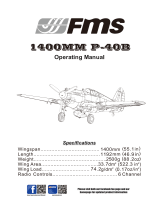 FMS Models FMM081P Owner's manual
FMS Models FMM081P Owner's manual
-
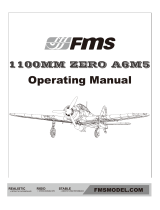 FMS Models FMM082P Owner's manual
FMS Models FMM082P Owner's manual
-
FMS Models FMM124P Owner's manual
-
FMS Models FMM086P Owner's manual
-
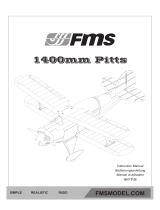 FMS Models FMM126P Owner's manual
FMS Models FMM126P Owner's manual
-
FMS Models FMM071RX Owner's manual
-
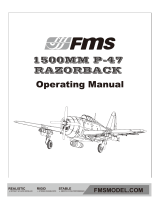 FMS Models FMM089PX Owner's manual
FMS Models FMM089PX Owner's manual
-
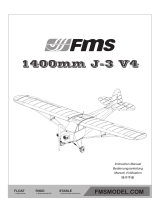 FMS Models FMM106P Owner's manual
FMS Models FMM106P Owner's manual
-
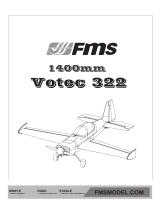 FMS Models FMM1011P Owner's manual
FMS Models FMM1011P Owner's manual
-
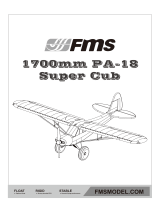 FMS Models FMM110PF User manual
FMS Models FMM110PF User manual
Other documents
-
FMS Sbach 342 Operating instructions
-
FMS 1400mm J-3 V3 User manual
-
FMS FMM080P Owner's manual
-
FMS FMM088PRED Owner's manual
-
FMS FMM095PRED Owner's manual
-
HP DVD Writer dvd500 series Quick start guide
-
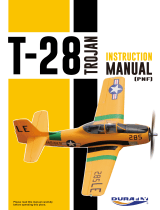 Durafly T-28 Trojan Naval Aviation Centennial Edition PNF User manual
Durafly T-28 Trojan Naval Aviation Centennial Edition PNF User manual
-
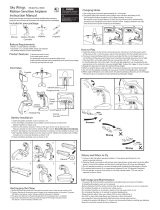 Excalibur electronic 8628 User manual
Excalibur electronic 8628 User manual
-
E-flite EFL49500 Owner's manual
-
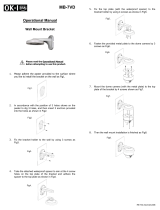 Okina USA MB 7VD Owner's manual
Okina USA MB 7VD Owner's manual

























